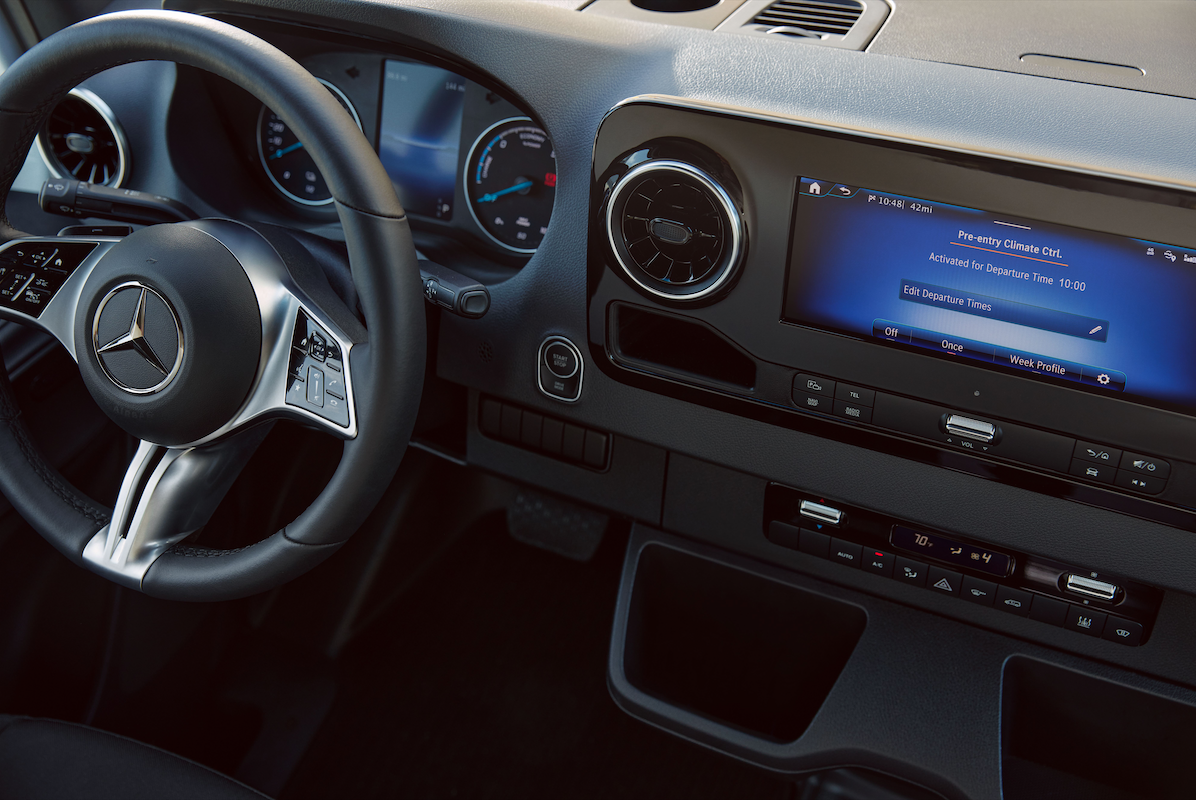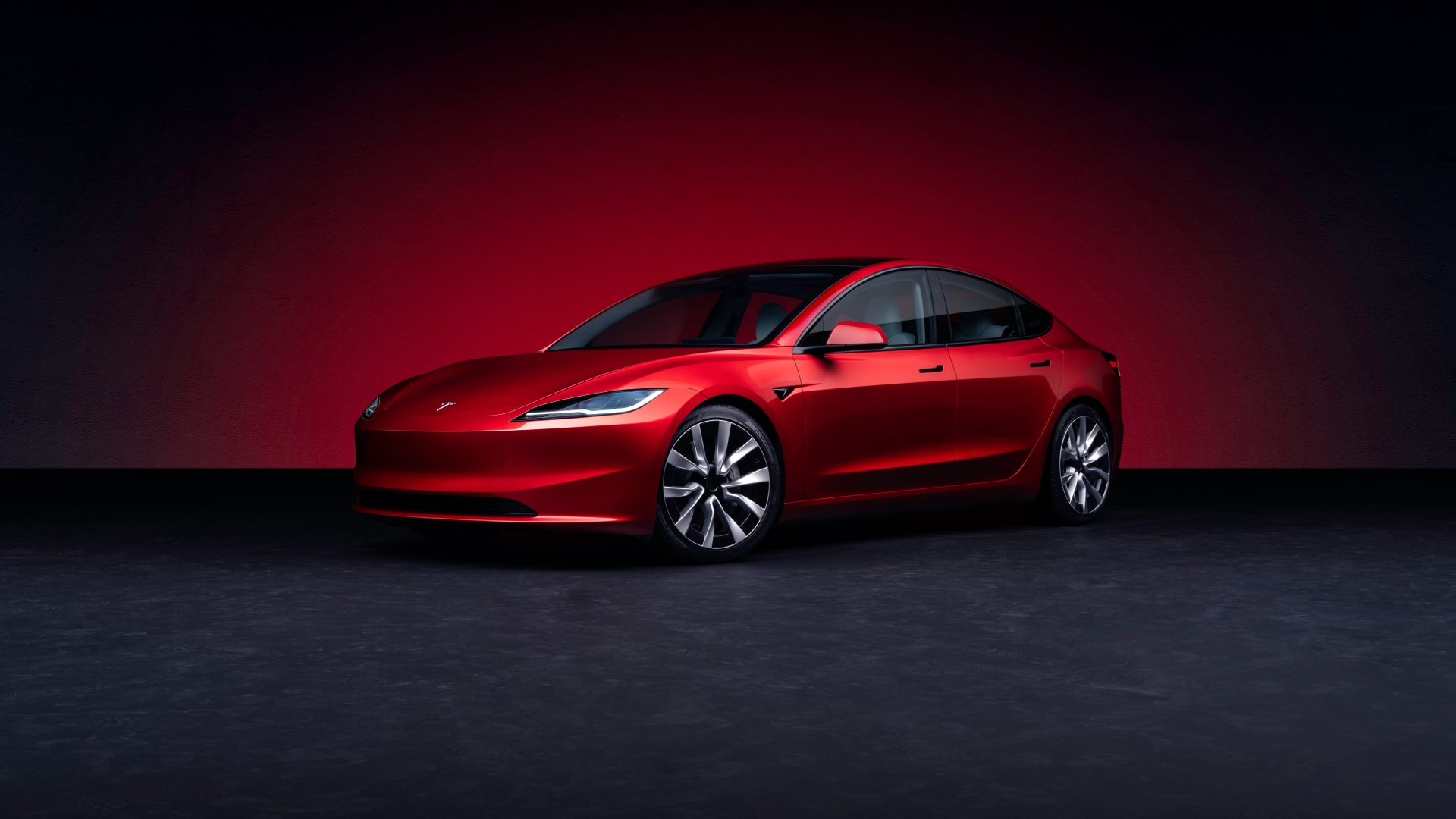2024 Mercedes-Benz eSprinter Specs, Price Revealed
By Edward A. Sanchez — Aug. 31, 2023
Electrification is starting to seep into all transportation segments, and commercial vehicles are no exception. Fuel savings is one of the biggest attractions to fleets. Soon, there will be a new, and compelling option for tradespeople and fleets. Mercedes-Benz just announced pricing for the 2024 U.S.-spec eSprinter, which will start at $74,161, including a mandatory $2,295 destination charge. The higher-output version will start at $77,611, including destination.
That figure is certainly not “cheap” by any means. But with F-150 Lightnings approaching $100,000 on top trims, it is not unreasonable. Interestingly the eSprinter will initially be offered in only one body configuration: a high-roof, long-wheelbase cargo van, with a 170-inch wheelbase and a massive 488 cubic feet of cargo capacity. An available digital rearview mirror gives full rear visibility to the driver, even on models equipped with full-sheet metal rear doors.
Two power output levels will be available, 134 hp and 201 hp, both with a peak torque rating of 295 lb-ft. Providing power will be a lithium iron phosphate (LFP) battery with a usable capacity of 113 kWh, a substantial step up from the 66 kWh pack currently offered on the Ford e-Transit. This gives the eSprinter a WLTP rated range of 249 miles. In terms of charging, Mercedes claims the eSprinter will fully charge in 12.5 hours on a 240V/32A circuit, and will charge from 10-80% in 42 minutes on 115 kW DC fast charging. Although Mercedes-Benz has committed to the NACS protocol in North America starting in 2025, presumably the eSprinter will launch with a CCS1 port for the North American market.
Pricing of the Mercedes-Benz eSprinter isn’t cheap, but operational cost savings that come with electrification could be the swing vote for companies looking to invest in their fleet.
On the EPA cycle, expect a range of closer to 200-220 miles, still a substantial improvement over the e-Transit, which has a maximum range of 126 miles. I believe it’s inevitable that Ford will step up with a longer-range e-Transit now that it has some competition in this space – as it should.
The eSprinter offers three drive modes and five regen modes. Top speed is limited to 75 mph, presumably for preserving range. Having driven a diesel Sprinter at highway speeds, that speed limit is rational, since any speed above that, the Sprinter’s height and susceptibility to cross-winds becomes apparent.
And interestingly, the rear drive unit itself weighs 286 pounds.
The eSprinter’s cabin isn’t lush, but it would get the job done.
Like the e-Transit, the eSprinter’s charge port is located in the middle of the grille. While this design doesn’t make much sense on trucks equipped with a frunk, it makes sense for vans, in which a frunk would have limited utility.
Additional advantages of electrification include climate pre-conditioning, even in enclosed spaces. If the vehicle is plugged in, the system will use “shore” power to power the HVAC system to pre-condition the cabin, preserving the battery’s state of charge to optimize range. Through the Mercedes “me connect” smartphone app, the driver’s seat can be pre-heated in addition to HVAC climate conditioning.
Electrification of the Class 2-3 van market makes a lot of sense for tradesmen and fleets, offering a substantial fuel savings for urban and suburban delivery, and likely much lower maintenance compared to a diesel or gas equivalent. While the up-front price is steep, the fuel and maintenance savings over a conventional equivalent could be realized in just a few years.
Now we’re eager to see how Ford will respond to Mercedes’ serious electrified contender in this segment
(Images courtesy Mercedes-Benz)









